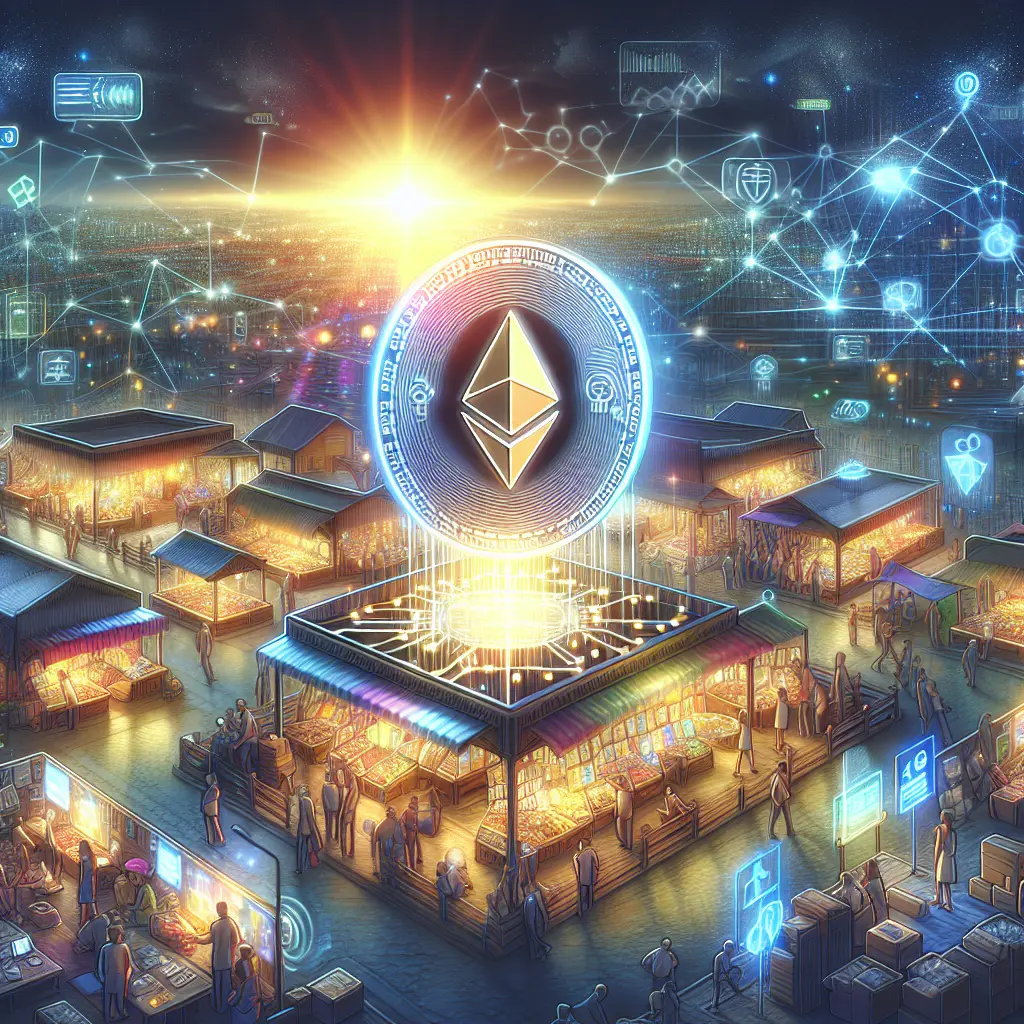
In the burgeoning world of digital assets, Ethereum has emerged as a key player, particularly in the realm of Non-Fungible Tokens (NFTs). As the backbone for numerous decentralized applications, Ethereum's influence spans across various sectors, with the NFT markets being one of the most dynamic. This post explores how Ethereum is enabling and shaping the NFT markets through its innovative blockchain technology.
Ethereum's Role in NFT Markets
Ethereum blockchain, the second-largest cryptocurrency platform by market capitalization, is central to the development and operation of NFTs. Unlike standard cryptocurrencies that promote fungibility where each unit is the same as every other unit, NFTs are unique digital assets. Ethereum's introduction of smart contracts with the ERC-721 token standard has allowed developers to create their own NFT crypto markets on the Ethereum NFT platform.
Smart Contracts and ERC-721
Ethereum smart contracts are self-executing contracts with the terms of the agreement directly written into code. This feature is crucial for the NFT markets because it ensures that the ownership and transfer of NFTs are secure and automated. The ERC-721 token standard, specifically designed for NFTs on the Ethereum network, supports these contracts by enabling each token to be unique and non-interchangeable.
The Growth of Ethereum NFT Platforms
The flexibility and robust security of Ethereum have made it a preferred platform for NFT minting and trading. This has led to the proliferation of decentralized NFT marketplaces on the Ethereum network. These platforms allow artists, gamers, and collectors to trade NFTs without the need for an intermediary, ensuring artists can monetize their work more directly and efficiently.
Recent Developments and Challenges
Despite its successes, the Ethereum network has faced challenges. Recently, U.S. Ethereum ETFs witnessed net outflows on their second trading day, indicating possible volatility or investor hesitance. Meanwhile, crypto asset firm Grayscale reported a staggering loss of $20 billion in Bitcoin and Ethereum ETFs, underscoring the high-risk nature of cryptocurrency investments.
On a more positive note, spot Ethereum ETFs are set to launch in the U.S. on July 23, a move that could potentially stabilize and boost investor confidence in Ethereum-based products. This comes amid calls from Ethereum co-founder Vitalik Buterin for a broader political perspective in crypto to ensure more sustainable growth and acceptance of blockchain technologies.
Security Concerns: The WazirX Incident
Security remains a prime concern, highlighted by the recent incident where a hacker involved with WazirX swapped $150 million of tokens to Ethereum. Such events stress the need for enhanced security measures in cryptocurrency and NFT transactions.
Market Trends
Looking ahead, analysts are identifying top altcoins that could lead in the next bull run, with Ethereum (ETH) prominently featured alongside Bitcoin (BTC), Solana (SOL), Binance Coin (BNB), Ripple (XRP), and 99BTC. Additionally, meme coin projects are gaining traction in the crypto space, with several new coins like WienerAI, Pepe Unchained, and PlayDoge attracting attention in their presale stages.
Political Influence
The upcoming U.S. election could further influence the cryptocurrency markets, potentially triggering another bull run. Observers are speculating about which cryptocurrencies, particularly those related to Ethereum and other layer 2 solutions, might benefit from such a shift in the political landscape.
Conclusion
Ethereum's role in enabling NFT markets is multifaceted and profound. Through its support for smart contracts and unique digital assets via the ERC-721 token standard, Ethereum has created a robust environment for the NFT crypto market. However, as this technology continues to evolve, it faces challenges like market volatility and security issues that must be addressed to sustain growth and investor trust.
As we look towards a future where digital assets play an increasingly central role in our economic systems, Ethereum’s blockchain technology remains at the forefront of this digital revolution. Whether dealing with art, gaming items, or other collectibles, Ethereum’s infrastructure provides a decentralized, secure foundation that continues to transform how we think about ownership and value in the digital age.
Ella Franklin
Signing off with a reminder: In the world of blockchain and NFTs, every digital token not only represents a piece of art or a collectible but also embodies a small but significant part of blockchain’s revolutionary potential.